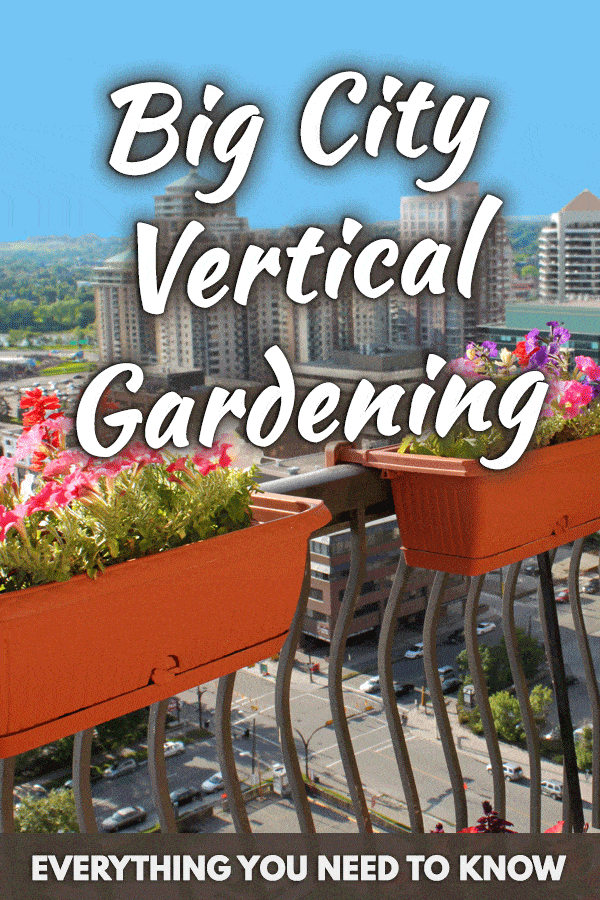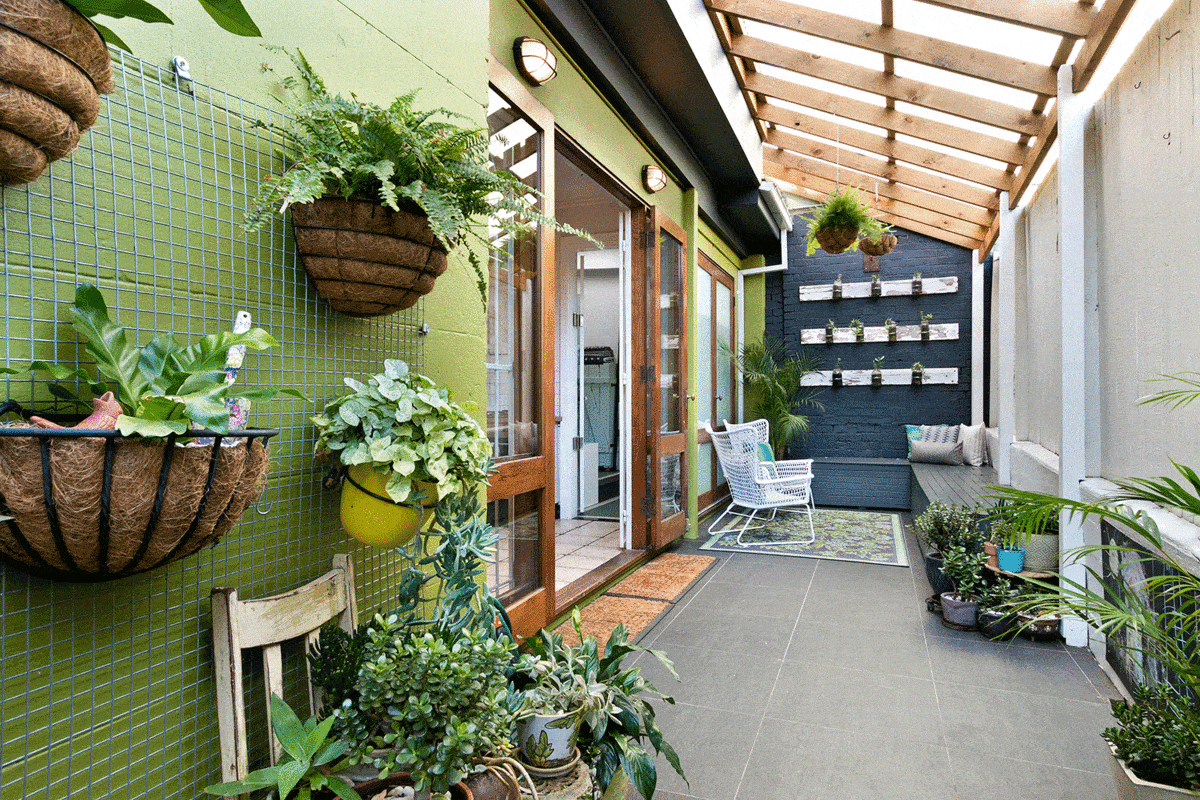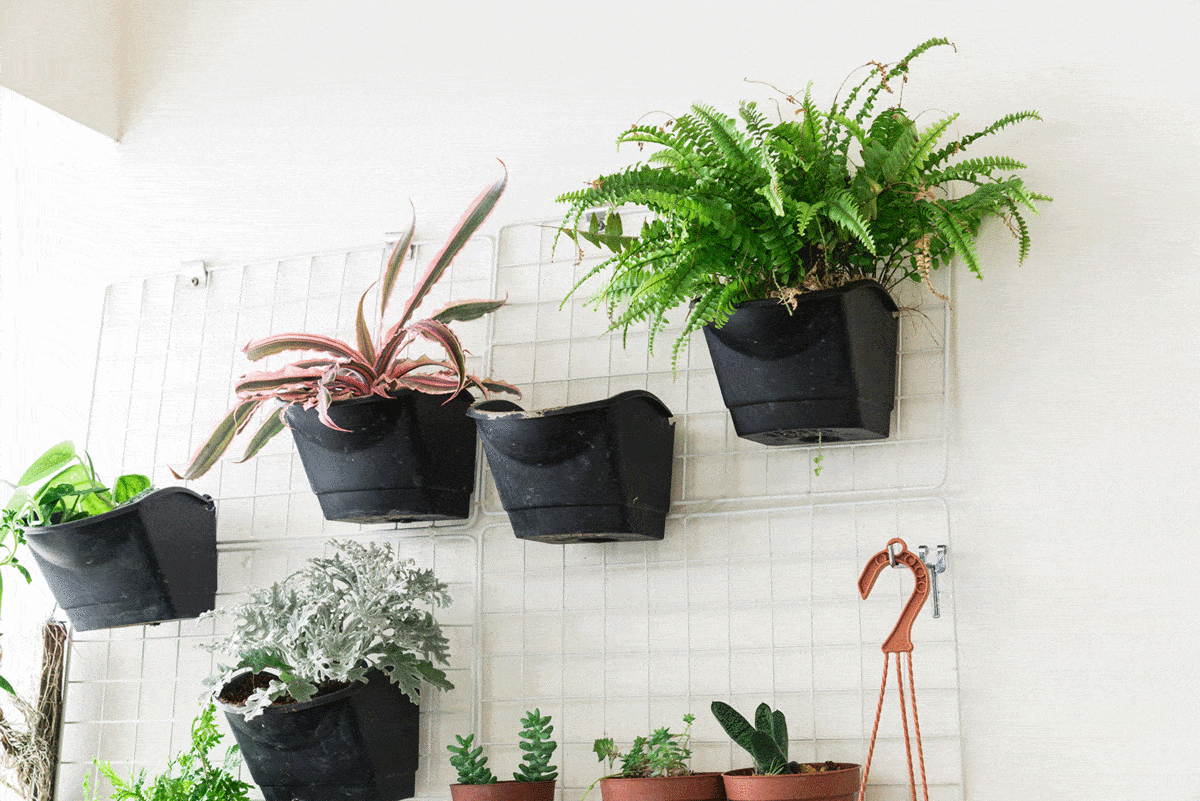 If you’re living in a big city, you may be wondering if and how you can create a vertical garden in your urban dwelling. Can you have a gorgeous green wall of plants in an apartment? Is there enough light and space? Can you water your indoor vertical garden? Should you place it in the kitchen, living room or perhaps on the balcony?
If you’re living in a big city, you may be wondering if and how you can create a vertical garden in your urban dwelling. Can you have a gorgeous green wall of plants in an apartment? Is there enough light and space? Can you water your indoor vertical garden? Should you place it in the kitchen, living room or perhaps on the balcony?
The good news is that it’s not only possible to have a Big City Vertical Garden - it's actually a great idea! Vertical gardening lends itself beautifully to the limitations of urban life!
This post will show you how to set up a vertical garden that’s suitable for the big city. We’ll discuss how to find the best location, design your garden and install it, so you can enjoy all of the benefits of gardening - even in the metropolis.
Vertical Gardening is especially relevant for big city living.
Outside of the pleasure coming from a few potted plants, there is generally extremely little floor space in which avid gardeners can work. Apartments and condos which have balconies or patios present unique and loaded opportunities for luscious plantings, but so many living spaces in big bustling cities do not have the luxury of outdoor environments.
As it happens, vertical gardening is a mode of gardening which ignores floor space in favor of verticality. In other words, it is completely possible to garden and even reap garden harvests inside of small living spaces. Delightfully, for lovers of indoor plants, the possibilities with vertical gardening are off the charts.
This post will approach a step-by-step plan for converting the smallest floor space into an expanded garden using the brilliant newer technologies made available through the efforts of garden experts and lovers of indoor horticulture.
Step 1: Finding The Right Place For a Vertical Garden

Every apartment has its own strengths and deficits for growing plants indoors. There are two main considerations when deciding on a location for your urban vertical garden.
How much light do you need?
Rooms with huge open windows facing the sun allow in enough light to quite literally “farm”. Inasmuch as sunlight is the key element in the Photosynthesis process, sunlight tends to be the single most important factor.
Having said that, a lack of sunlight has little to do with whether or not plants will grow. In other words, you could grow some plants in darker areas in your apartment. It just depends on the plants, in the end. Plants adapted to growth in the understories of jungles would never thrive in full or even half sun.
What kind of effect are you looking to get?
A garden wall could be constructed for effect, for example, directly in front of visitors as they enter the apartment. A gorgeous multi-colored and rich plant environment offers a bit of a surprise as well as an immediate element of relaxation. It can be exciting for the friends who share a gardening instinct or those with a more creative attitude about making a home interesting and even productive. A less showy location may be better for a small herb or vegetable vertical garden, constructed mainly for practical reasons. You can still enjoy it for its beauty as well, even if your guests won’t be there to appreciate it.
Step 2: Creating a Plan
Planning a gorgeous garden is definitely called for. The first thing to address is structure. Any vertical garden requires a strong enough support framework to bear the added weight of water as well as that of the growing plants.
Considerations could also include whether the designated framework is going to be a factor in the overall appearance or whether it will exist as a simple and hidden background structure. Beautiful wood finishes and/or exotic paint colors are completely possible to add to the beauty of a planted wall in all its growing lusciousness. A wide range of construction is possible, from a portable ironwork to plastic stacked bins to wall systems with reservoirs of water beneath the structure which can provide the medium for automatic watering to pipe upwards.
Needless to say, considerations about waterproofing, or simply factoring in “what could go wrong” mean things like an attachment to a wall requiring a layer of protection. Free-standing structures should also still involve protecting the floor from accidental spills.
Step 3: Building The Structure and Putting Containers In Place
Once the plan has been arrived at, you can proceed with building the vertical garden. Whatever system is chosen, for whatever reasons, some factors are necessary to remember.
Preparing the wall
For wall systems, it is always wise to protect the typical gypsum walls of homes and apartments with a barrier of some kind. Most people position plywood against the wall and securely attach that to the wall. This is usually painted to match wall color but, as mentioned, it can also be colored to choice. A thick coating of marine enamel or a few liberal coats of a semi-gloss latex paint can provide sufficient waterproofing. From this, we build outward.
Setting up your containers

Various products are now available for placing your vertical garden’s plants in. The “tray system” is somewhat common - attaching virtual gutters or gutter-like metal or tough plastic long trays, the length of the plywood backing make for sufficiently wide and deep planting areas. You can even paint the trays prior to planting if you wish to get some color in before the plants mature and grow over to redefine the look.
There are also fabric pockets designed for vertical gardens which you can apply individually or in premade racks like shoe holders, offering from 4 up to 24 pockets. They hang in series.
These specifically designed vertical garden containers are basic pockets which can hold both plants and the soil for plants within the pocket. They are very flexible and extremely easy to set up. Durable and compact, designed for exactly the process of vertical gardening, they represent a hugely practical and easy way to arrive at a garden wall.
Step 3: Putting your irrigation in place
Now would be the time to set up your irrigation system, if you want one. For a smaller garden, manual watering may be enough. For anything larger - or if you wish to automate most of the maintenance, consider installing an automated drip system.
You can either hook up your garden to the city watering system or you could install a watering tank. Beginning on the bottom with a reservoir, this tank can be of a gorgeous wood finish or really, any finish at all depending on creative choices from cement to plastic to stone-faced. A structure can be built, tied into the base, rising upward.
Any width is possible as is any height. But what is most compelling about this system is that a small water pump - like a fish tank pump - can be placed in the reservoir and can automatically water the plants at preset times. This takes away the anxiety of regular watering and can even allow for a vacation or time away from home without sacrificing the wall.
The final benefit is in that any excess water simply drips its way down into the tank below. In a system like this, almost any container of any type can be used, from simple, adapted plastic bottles to professionally customized containers.
Step 4: Consider A Lighting System
With the advent of LED lighting, cheap, effective lighting has become completely possible. These “Grow lights” can almost literally replicate sunlight in terms of photosynthesis. What it means is that almost anything is possible, from gardening for food and herbs indoors, to provide for the needs of gorgeous plants which require varying degrees of the sun.
Unfortunately, these lights are not unobtrusive - they can be bright - but what they offer is pretty awesome and they can activate for designated lengths of time automatically. They can run during sleeping or office hours and still do the job. Imagine picking lettuce off your wall or snipping some fresh Basil for cooking purposes. Equally interesting are the range of foliage and blooms possible indoors with this system.
You can also provide lighting to simply enhance the look. There are many options in this area as well and they are relatively cheap, easy to install and effective.
Step 5: Watering The Urban Indoor Vertical Garden
As mentioned above, there are systems which really make indoor vertical gardening easy to water. These automated and enclosed systems can even apply fertilizer at a uniform rate. But not everyone can afford or implement this particular design. In the end, it leaves us with few options which are more reliable than hand watering.
Trays with built-in watering systems
One slightly preferable option deals with the “tray system” spoken of above. Regular trays are most certainly watertight. Even the growth of roots and branching can be monitored to remove potential impediments to spillage. But the tray system has an ally in a wrap which encloses the roots of plants and can conduct water vertically inside the tray itself. Therefore, the amount of water needed is not some large amount of water which we take to the brim of the tray. Indeed, we cover the bottom of the tray and allow the fabric technology to raise the water to all parts of the plant.
Manually watering your plants
Generally, returning to common practice, we most often simply have to water the plants ourselves. There are wonderfully efficient tools which can help not only in reaching high places but which hook over the rim of whatever container we use. We just squeeze and apply the water at a rate we can see.
And there are certain advantages of course to watering by hand. For one major thing, it keeps us up close and personally aware of the changes and challenges growing plants experience. This cannot be underrated as an asset, in the end.
Enjoy your city garden!
Designing and growing a vertical garden in a big city can be an absolute pleasure. Watching plants develop, being creative and having artistic design fun with swaths of colored foliage, seeking blooms from exotic plants all combine in a beautiful, sensuous and healthy air. Even growing one’s own food and herbs are possible in the space taken up by a bookshelf. The stress relief can be off the charts when we experience such a lovely place. And it is totally personal and well-owned. This is interior decorating at its finest and highest hour.
